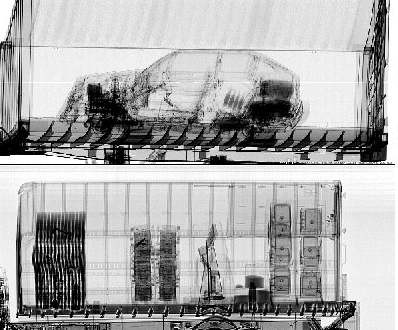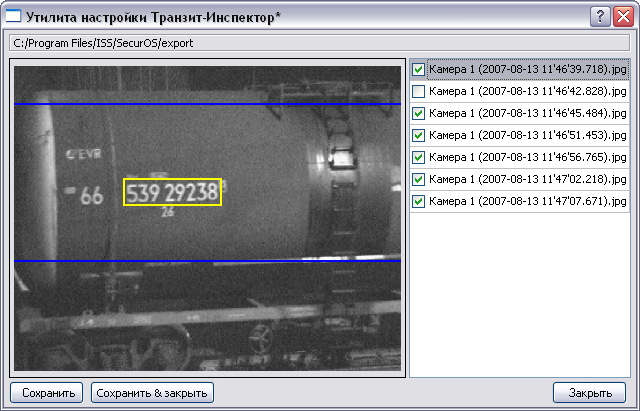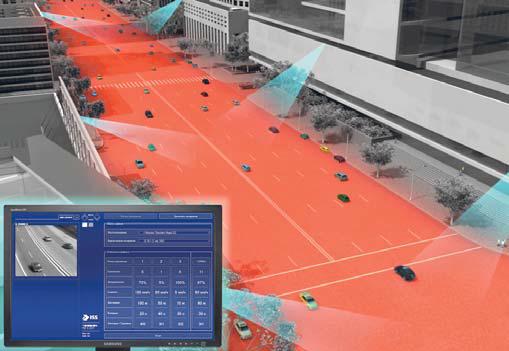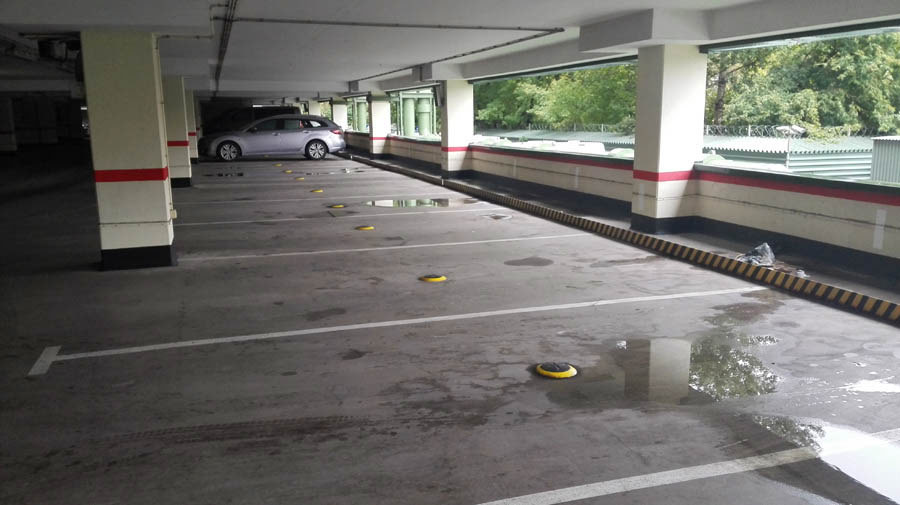Any technological infrastructural toys for public places - say hello to Skynet

X-ray installation for transport, where by means of computer vision objects that look like weapons or hidden people are searched.
Let's start with the fight detector. The task is quite clear: there are many processors and smart programmers, the city is covered with cameras, all you need is nothing - to make sure that as soon as someone starts fighting, the moderators with rubber truncheons receive a message. Then they "will moder" in the old manner.
A similar detector is being tested so that nightclubs in the toilets do not do anything extra. There the accuracy is higher, because the plot is simpler, easier to algorithmize and lasts longer (usually).
')
But let's not dwell on this pleasant note, but continue to watch what else is in the arsenal of the future SkyNet. Well, or Big Brother.
Detectors for video surveillance in public places
The fight was the hardest. Previously, such a problem was solved with the help of dozens of specially trained attendants, each of whom looked at 12-15 screens. Great job for a pensioner, almost like an escalator in a subway station. Then the Americans came up with a quick show of the situation to the operator (faster than a person can consciously recognize them) and wait for the stress response of the brain. The first samples worked perfectly, but then the candidates quickly got used to and became unusable. Today, we have just started to deliver such software hinges for video surveillance, along with other already familiar features - searching for items left behind, recognizing numbers and faces, counting people in queues, and so on.
My colleagues already wrote about face recognition, and we'll tell you about the queues a little later. We have not tested the fight in detail yet (there are certain difficulties with beta testers), but in several cases it was determined correctly. In general, even with an accuracy of 15%, this is already a good thing, but it still has to evolve and evolve.
By the way, now at airports and stadiums, for example, we put 16- or even 30-megapixel cameras looking at the crowd. In our experience, this is quite enough for face recognition to determine compliance with a sample of 2-3 thousand people (staff, people in search, etc.) with high accuracy.
Cargo detectors
As you understand, machine vision and pattern recognition is used almost everywhere. One of the clearest examples was before kata - X-ray scanning of cargo. Now many large-sized and some “airport” scanners are already equipped with autosearch for specified objects. For example, runaway Mexicans or horns to the Kalashnikov assault rifle. But more often everything is more trivial: a truck enters a facility like Zastava-1, it is scanned, and organic matter is well distinguished in it (explosives, drugs). Similar pieces are put in ports, mobile containers with X-ray units can be deployed anywhere. Bandwidth is very high.
There are complexes for railways - it is important to count wagons and containers in them. The same SecurOS Transit complex recognizes wagon numbers on a moving freight train (with an accuracy of about 95% taking into account pollution and different weather), photographs the load, immediately determines the type of the wagon by its number, searches for where the car should be according to the documents, and then compares with actual position.


Judging by the dates - one of the first implementations, when the functions were OCR.
Or does the reverse task: you enter the parameters of the car, and the complex searches for them in the database. Carriers use it widely - from monitoring the integrity of the cargo to accounting for various left-wing and disorder. In this complex, by the way, there are several frames for one number - there is a very interesting mathematician on processing them in a blurred form.
Traffic detectors

It's simple. The robot monitors the rules of the road (at the level of "you can not go back on an opposite", "you can not stand in certain places", "can not be rebuilt otherwise than by the rules"), determines the speed of individual machines and the flow entirely, counts machines and determines the strip utilization , recognizes trucks and cars separately (this is done to optimize traffic patterns on a post-analytics).
If we add number recognition to this thing, we get another piece of the mosaic. In China, for example, the road network in Shanghai is supplied with cameras with flash on special masts, and they carefully record each number to control the home region and speed. There is also a traffic unloading program - simplifying, on Mondays, it is impossible for those who have a number ending with 1 or 0, on Tuesdays - 2 or 9, and so on. Such comrades immediately arrives Chinese warning about paid travel. That is a fine (about 500 rubles for 4 hours).

And this is the introduction in Yaroslavl and Perm - the accounting of cars in the showroom and the accounting of containers.

And this is a magnetic detector of parking space employment - this is our story about their testing.
Even at checkpoints, enterprises use classic blocking devices such as posts or barriers with bottom scanning systems. There is a special platform that watches the video camera on the bottom of the car for new interesting things.
RFID tags
RFID tags (similar to those found in bookstores and clothing stores to protect against theft) transmit and receive data within a radius of up to 150 meters) can be used quite widely. Banal version - control of library books. Took the book - spent on the scanner to her and his card. Returned - did the same. The options are more complicated - control of the staff, determining which builders and where they went to a large construction site, different things to control the movement of the elderly and the disabled (important for relatives).
Search for objects
My favorite feature is searching for specific objects by parameters. How to search for the lost car, you have already read above. On smart video surveillance there is also a bunch of lotions. These are freeze frames in dangerous places (all the contacts of the shelves to the store visitor or all actions with the server in the data center), the trajectory of the person (in order to understand where and where he goes, and make some decisions), crowd control.
During the day, the guards or the police have the opportunity to search for a person by the color of clothes, height, skin color, hair, direction of movement (from zone to zone, inside zone and so on). At night, because of the black-and-white picture, it is more complicated, only the selection by trajectories - “everyone who came to the hangar from the warehouse”.
Digital signage
Warning systems have also become smarter in recent years. Notice how the concept of what should be the screen changes smoothly. In food courts, for example, static menus are getting smaller: they are replaced by LED and plasma panels. In the ABC of Taste, Chanel, at TNK and Lukoil gas stations, a constantly updated data stream is used everywhere. For example, judging by the gas stations, motorists need traffic jams, weather, exchange rates and tire advertising, as without it.
A café with an electronic menu (available at a number of gas stations and at McDonald’s) goes almost right along the way. Interaction systems are conveniently integrated with alerts. There are electronic guides in the museums: in Tula, in the weapons museum there are special projectors with actors who are directly in the decorations of the dugout or the commander-in-chief's office. We, for example, had an introduction in a large Russian bank - there is a camera at the entrance to recognize the sex of a person (different services are offered to boys and girls), and then electronic helpers, who give advice of the day, “escort” the guest’s corridor. In general, we have done quite a few installations in museums, and not only by video - here are some more examples .

All Wi-Fi points are plotted on the map here (98% are phones), and by them you can determine where it’s interesting at the exhibition.
Stadiums, depending on the zone, use targeted signage with the help of Digital Signage with fans. Now we are completing such a project at a large sports facility in one of the Russian regions.
By the way, exhibitions regularly show virtual fitting rooms (this is where you can try on a non-existent product and “create a character”, as in RPG), but all the same, scans sometimes turn out freaks, like from TES: Oblivion.
The best integration of sensors and DS is face recognition in the elevator and showing the plan of meetings while you go to the floor.
HD Wi-Fi
High-density Wi-Fi is a combination of several broadcast bands, the ability to use transmission on several channels at once (up to four per device) and good beamforming. A practical example - you can broadcast your video at the stadium to each fan phone. Replays of interesting moments, tracking a specific player, close-ups of people directly on phones and tablets in HD - this is already a reality.
In the case of an emergency, each such telephone becomes an evacuation aid device - it gives an individual route to each.
Infrastructure
All this requires a rather interesting infrastructure. It is clear that in 5G networks it will be possible to connect thousands of devices to a cell, and the cells themselves will be stumbled so often that the communication problem will not be present even for very low-power devices operating for 5–7 years with one battery. But now food is needed, and this is a problem. I made the decision not so elegant, but very practical. We mounted the control of the area around the stadium and in the park - led to the POE cameras. Ordinary copper RG-45, 3 kilometers in length - and at the end of the power converter. Everything works great.
My colleague Ivan Tsaryov (@ Tsar111, ITsarev@croc.ru), and my mail - AChuvilin@croc.ru can help with answers to questions on a weak-botochka.
Source: https://habr.com/ru/post/313494/
All Articles